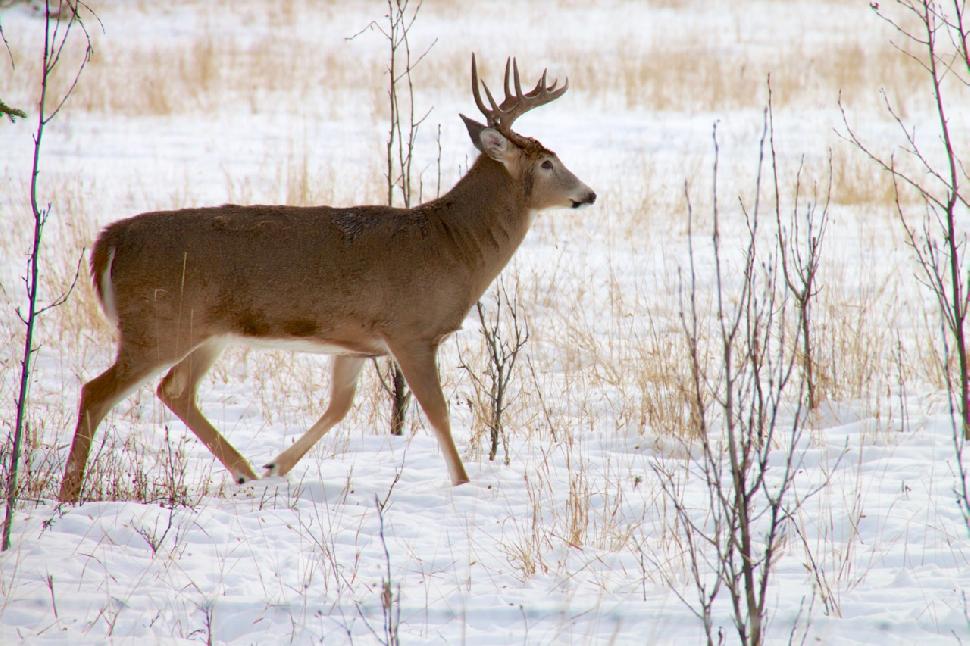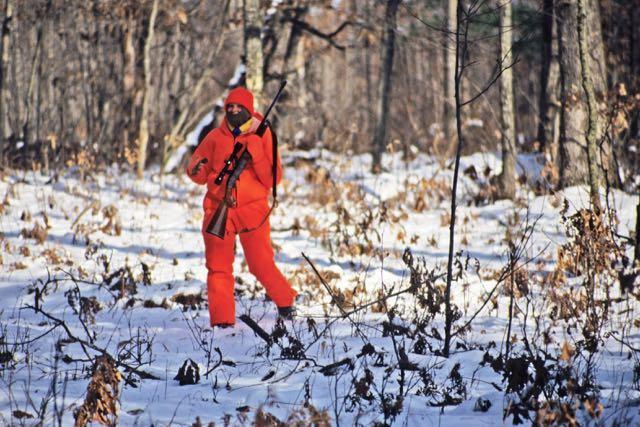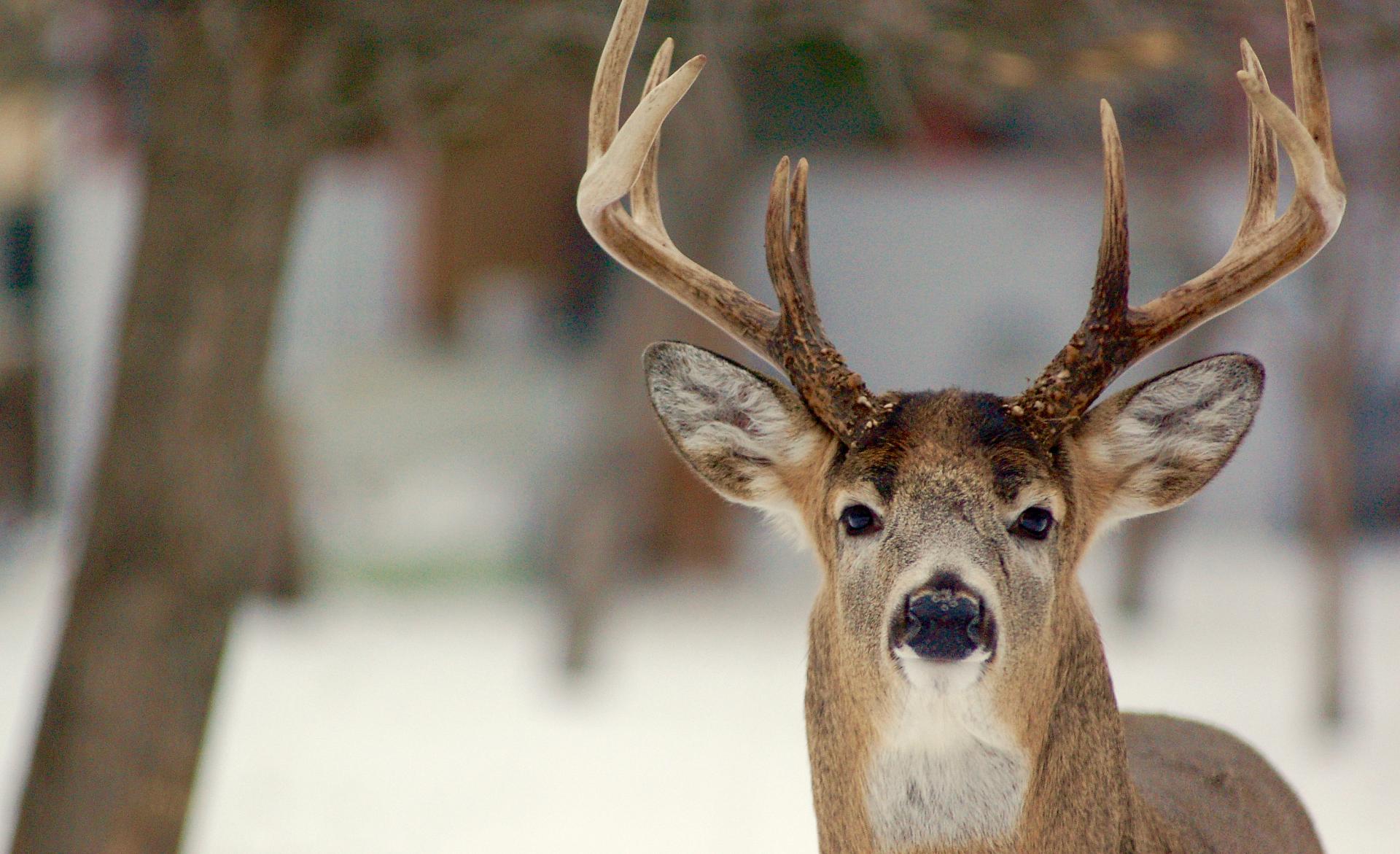Blueprints for Bucks
To Successfully Hunt White-tailed Bucks, You Need to Choose Just the Right Strategy
Advertisement

#3 Tracking
Tracking whitetails is really an extension of still-hunting, but with one significant distinction—you’re in pursuit of a specific buck that you’ve identified by his hoofprints. Conditions are seldom suitable for tracking, however, unless there’s a fresh layer of snow on the ground..
Pros
Discover a buck’s fresh tracks in the snow and you can be absolutely assured of one thing—there’s a deer at the end of the trail. No other deer-hunting strategy offers this assurance. So, along with dogged perseverance, successful tracking requires the proper mix of snow conditions, timing and an ability to identify a buck track when you see one (see “Hunter tip”).
Advertisement
A couple of inches of fresh, wet snow is best for revealing fresh tracks. If the snow is too fluffy, on the other hand, it’s much more difficult to confirm whether the tracks were freshly made. The same goes if the snow is too deep. And without a complete blanket of snow, you risk losing the trail altogether. You also don’t want the snow to be too wet. If the temperature drops, the snow can develop a crust and make for a lot of noise when you walk on it—a sure recipe for getting busted by a wary buck.
In the end, you want to track a buck as soon as possible after a snowfall; wait too long and you risk losing that one specific track among the many that will be laid down as more deer move about in your hunting area.
Cons
As with still-hunting, you’re on the move when tracking, and that increases the risk that a buck, with his finely tuned senses, will discover you before you spot him. Fortunately, fresh snow has a way of muting noise, but the trade-off is you can’t always see what lies beneath it. So, when you’re walking, always land on your heel first, as that makes it easier to adjust mid-step if you feel a twig or any other noisemaker underfoot.
Advertisement
Resist the tendency to walk quickly when tracking. I suppose it’s the anticipation that leads hunters to pick up the pace on a fresh track, even when they’ve learned to walk slowly when still-hunting. Bucks have a sixth sense when followed, so caution is critical. Always track with your head up, as you never know when your efforts might be rewarded.
Sometimes, you’ll have to abandon the tracks you’re following if the wind puts you in danger of getting busted. If you remain aware of your surroundings, however, you’ll be able to predict where the buck is headed, then circle around to keep the wind in your favour. If you reacquire the track, great. If not, you know he’s held up and you can still-hunt back to him, knowing you have a favourable wind.
You won’t always be successful when tracking, but there’s no better way to learn where, when and how bucks travel. And on those few special days when the snow is perfect, the wind is right and you’re sharp as a tack, you just might find yourself looking at a fine buck, facing away and standing in his own tracks, just as you imagined.

Hunter Tip: Judge Tracks
Typically, a mature buck has larger hooves than a doe, but this is no guarantee the tracks you see belong to a buck. And before anybody advises you differently, the presence of dew claws in a deer track is no indicator whatsoever that you’re on a buck—both sexes have these vestigial digits.
There are two primary indicators that you’re on a buck track. The first is the length of the stride. A big buck will always have a stride that’s significantly longer than any smaller-bodied deer. Look at relative stride lengths whenever you’re in deer country and you’ll learn to recognize a buck track, even when there are no tracks to compare it to.
The other thing to look for is the space between the front hooves of the track. Mature bucks are massive across their chests, and this is reflected in their hoofprints being significantly more widely spaced than those of smaller deer. Find a track with a long stride and good breadth and you can be confident you’re on the track of a buck.

